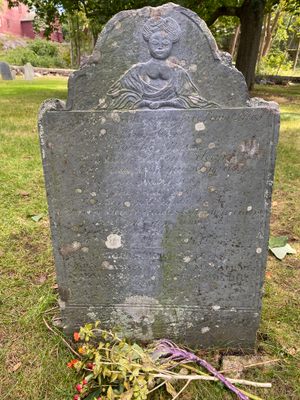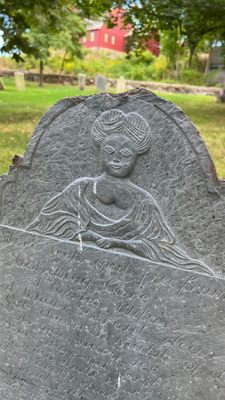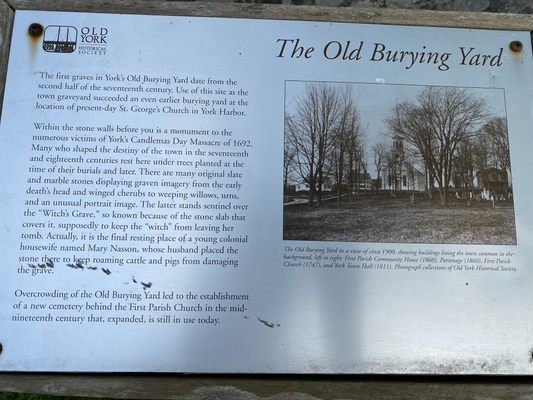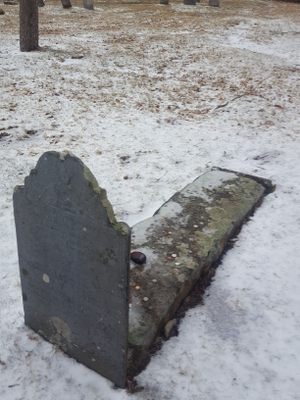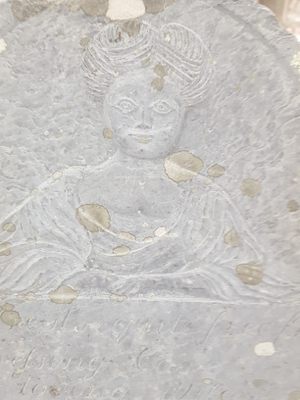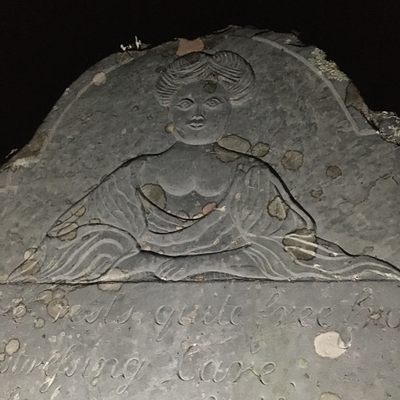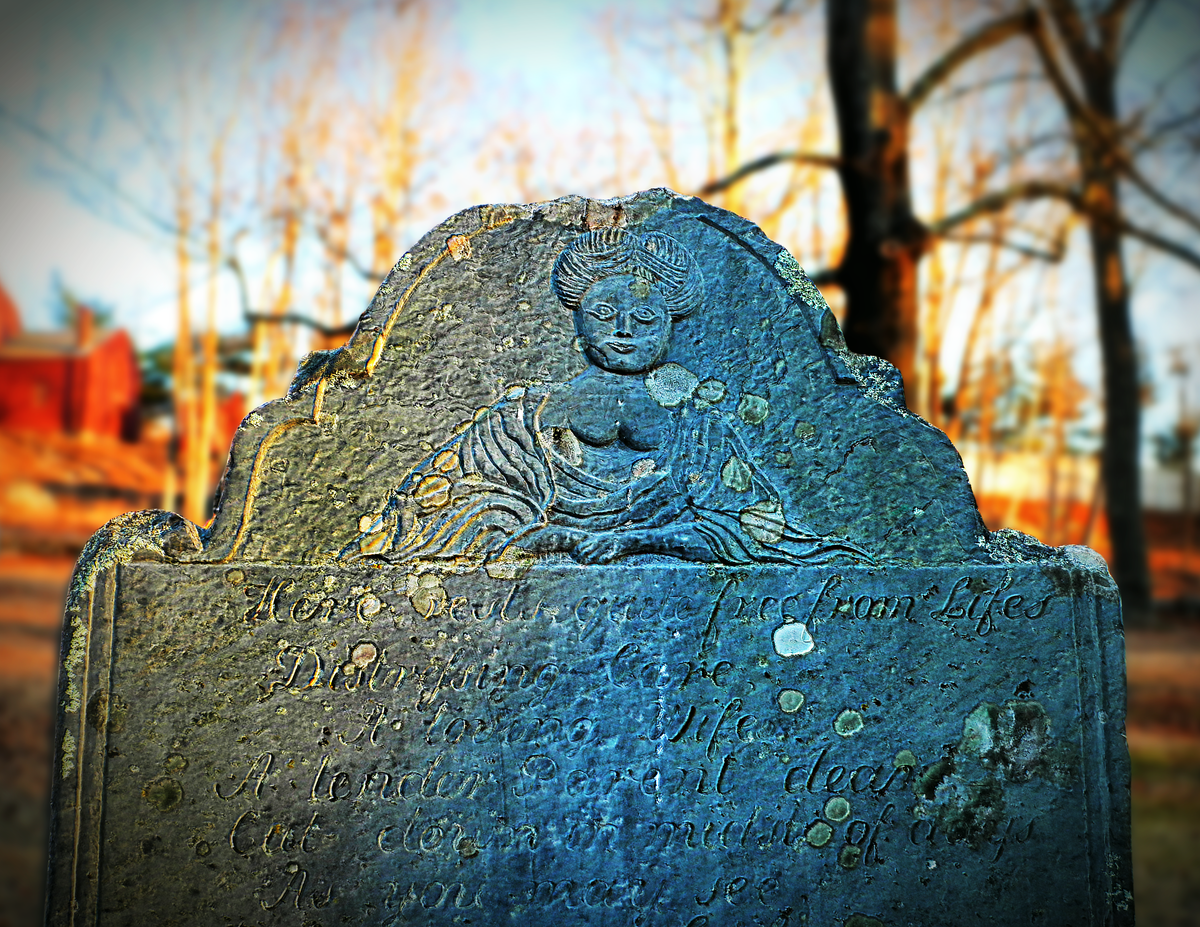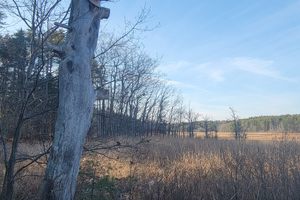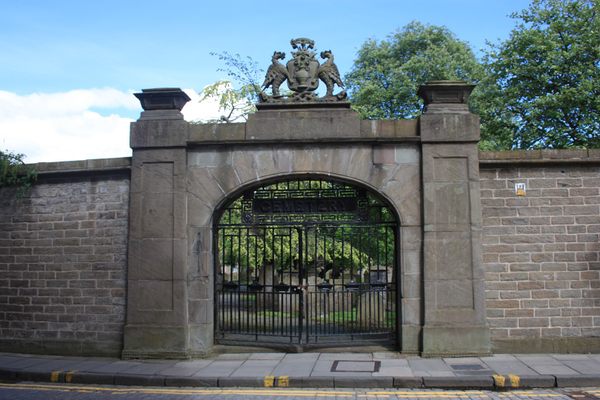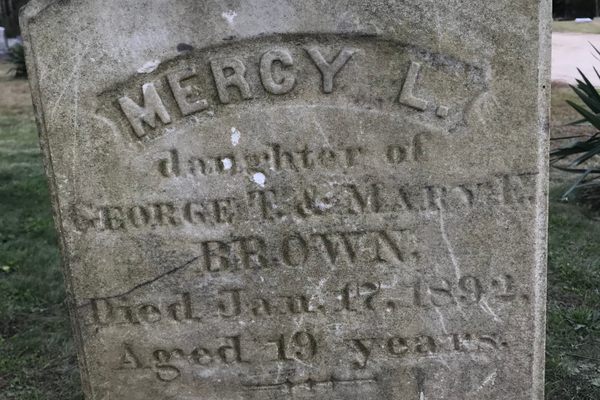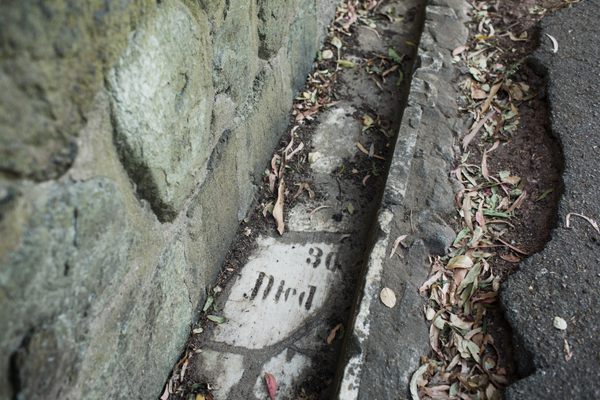About
The Old Burying Yard of York, Maine, dates back to the 17th century. It’s small, sparsely tombstoned, and surrounded by a low stone wall that sits peacefully in a shady spot among the historic buildings of the Old York area of town. Average as graveyards go, this one has a special tenant. Inside that graveyard is the grave of a witch.
Mary Nasson died on August 18, 1774. To memorialize her, her husband Samuel had an image of her carved on the crown of the gravestone. It depicts Mary, or at least her upper half, as a loosely berobed woman with bugged eyes, a thin nose, a slightly upturned mouth, and a humped hairdo that looks like two skeins of yarn.
There’s nothing accidentally evil in the image’s expression, nor has natural wear unpleasantly distorted her face. And the flowing script of her epitaph merely states that she was a loving mother and wife, and that the husband looks forward to when his dust can “mingle” with hers.
Nevertheless, the people of York say she’s a witch, a legend that popped up decades after Nasson's death. The legend arose because weighing down the sod of her grave is a granite slab, which, according to the later lore, was laid down as an attempt to keep Nasson from rising from it.
Of course, these types of stones are pretty common in old New England graves and were used to keep pigs and cattle away. Other graves in the Old Burying Ground probably had them as well, but over time they disappeared, probably recycled for building materials, including the wall of the cemetery itself.
The information sign on the wall of the cemetery lists the usual gamut of historical facts for the place, and even reiterates the legend of the witch’s grave—and also includes the real reason why the slab was likely installed.
Adapted with Permission from The New England Grimpendium by J.W. Ocker
Related Tags
Community Contributors
Added By
Published
May 16, 2012
Sources
- https://www.seacoastonline.com/story/news/local/york-weekly/2020/10/27/york-american-history-witchs-grave-myth-and-history/3747956001/https://www.seacoastonline.com/story/news/local/york-weekly/2020/10/27/york-american-history-witchs-grave-myth-and-history/3747956001/
- The New England Grimpendium: http://www.amazon.com/New-England-Grimpendium-J-Ocker/dp/0881509191/ref=sr_1_1?ie=UTF8&s=books&qid=1279457058&sr=8-1








